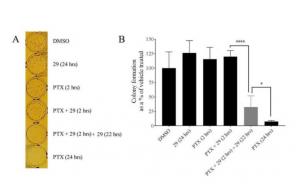The Geothermal Laboratory at Southern Methodist University (SMU) has just completed a research project that aims to use ultra-low-grade heat (150 °F to 250 °F) normally discarded by geothermal facilities to generate additional electricity. A central component of this project was the proprietary bottoming cycle technology of PwrCor, Inc., an advanced technology company that focuses on renewable energy solutions for Waste-to-Heat Power, Geothermal, and Solar markets.

SMU’s Geothermal Laboratory, which is a research facility devoted to broadening the understanding and use of geothermal energy, compiled information such as ambient air temperature, injection temperature, and injection flow rate to quantify the total thermal energy within the spent geothermal fluids already being produced, but not utilized, by 31 of 73 U.S.-based geothermal sites for which data was available. What they found was that roughly 427 MWe can be generated from the spent geothermal fluids of currently existing facilities. This represents about 15% of the capacity of the sites looked at in the study.
“Geothermal energy is the work-horse of green power production. Unlike various others, it operates 24/7, is suitable for baseload power supply, occupies a small footprint, and is designed to last,” noted Maria Richards, Geothermal Lab Coordinator for the Geothermal Laboratory. “PwrCor is working to improve the efficiency of our geothermal power infrastructure, and we commend their efforts.”
PwrCor is currently working with companies in the fuel cell and reciprocating engines industries, but they are also involved in initiatives in geothermal, oil and gas, and solar thermal. Their technology that allows for the cost-effective conversion of low-grade and ultra-low-grade heat to mechanical power and electricity could be revolutionary for businesses that could convert wasted heat to additional electrical power.
Joe Batir, a research geologist for the Geothermal Laboratory at SMU, said, “There is a great deal of heat being underutilized in geothermal power generating facilities around the United States. Technology that can convert even a small portion of this underutilized heat into additional power has the potential of bringing major benefits to both geothermal power producers and to the environment.”– Globe News Wire and SMU
SMU’s research was featured in Think Geoenergy.
About SMU
SMU is the nationally ranked global research university in the dynamic city of Dallas. SMU’s alumni, faculty and nearly 12,000 students in seven degree-granting schools demonstrate an entrepreneurial spirit as they lead change in their professions, communities and the world.





